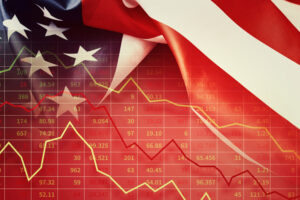Visualizing The Plunging Purchasing Power of The US Dollar
The comments below are an edited and abridged synopsis of an article by Tyler Durden
In 1933, one US dollar could buy 10 bottles of beer. Today, in the US, that’s the cost of a small McDonald’s coffee.
In other words, the purchasing power of the dollar has decreased over time as prices have risen.
In 1913, the Federal Reserve Act granted Federal Reserve banks the ability to manage the money supply in order to ensure economic stability. Back then, one US dollar could buy 30 Hershey’s chocolate bars.
As more dollars came into circulation, average prices of goods and services increased while the purchasing power of the dollar fell. By 1929, the value of the CPI was 73% higher than in 1913.
Between 1929 and 1933, the purchasing power of the dollar increased, due to deflation and a 31% contraction in money supply, before declining again. Fast forward to 1944 and the US dollar, fixed to gold at a rate of $35/oz, became the world’s reserve currency under the Bretton Woods agreement.
Meanwhile, the US money supply increased to finance the deficits of World War II, the Korean war and the Vietnam war. The buying power of the dollar reduced from 20 bottles of Coca-Cola in 1944 to a drive-in movie ticket in 1964.
By the late 1960s, the number of dollars in circulation was too high to be backed by US gold reserves. President Nixon ceased direct convertibility of dollars to gold in 1971. This ended both the gold standard and the limit on the amount of currency that could be printed.
Money supply (M2) in the US has skyrocketed over the last two decades, up from $4.6 trillion in 2000 to $19.5 trillion in 2021.
The effects of the rise in money supply were amplified by the financial crisis of 2008 and by the Covid-19 pandemic. In fact, around 20% of all US dollars in the money supply ($3.4 trillion), were created in 2020 alone.
The question is, how will the purchasing power of the US dollar evolve going forward?

